

Having taken over the production of these articles in July 2020, this is the first opportunity that I've had to write one on 29th February so I might as well exploit it!
As well as preparing for the start of our running season which, incidentally, has been moved forward to 16/17 March following a request for us to provide the Berwyn Shuttle service that weekend, we have now embarked on an M (major)
exam on the Wickham class 109.
The 'M' exam is the biggest one that we carry out and each of our units is subjected to one every six years. The 'M' exam for a power car comprises approximately a hundred separate jobs and the one for a trailer car approximately sixty jobs so the combination will keep us busy for several weeks especially since we are likely to discover things that create additional work. Some of the jobs on the exam sheet are quick to read and quick to carry out (e.g. "Toilet compartment and fittings check") whereas others are quick to read but take some considerable time to complete (e.g. "Engine oil and filter element renew"). As a result, a quick look at the sheets that are filled in as/when the jobs are completed, reveals the progress in terms of the fraction of jobs that have been done but additional engineering insight has to be applied in order to determine the amount of time and effort that is likely to be needed to complete the exam.
Following the success of some improvements to the worn brakegear and the refurbishment of the vacuum brake cylinder on one of the Wickham's bogies last year, the project to do more of the same on the other bogies will continue in parallel to the 'M' exam. We also intend to investigate a roof leak or two which could turn out to be a case of, "We've found a hole and are looking into it".
In the previous edition it was noted that we had taken delivery of three overhauled buffers. Well here is some photographic evidence...

Some information about the work that has taken place on our units at Pentrefelin (Llangollen) and Butterley (Midland Railway) since the previous report can be found in the 'Unit-specific work' section below.
I didn't expect to relaunch 'Out and About' quite so soon but we were asked to provide a 'Pretend-a-Steamo' steam substitute on the Berwyn Shuttle service on Wednesday 14 February. It was worked by the hybrid class 127/108 unit that can be seen at Berwyn in the following photograph...
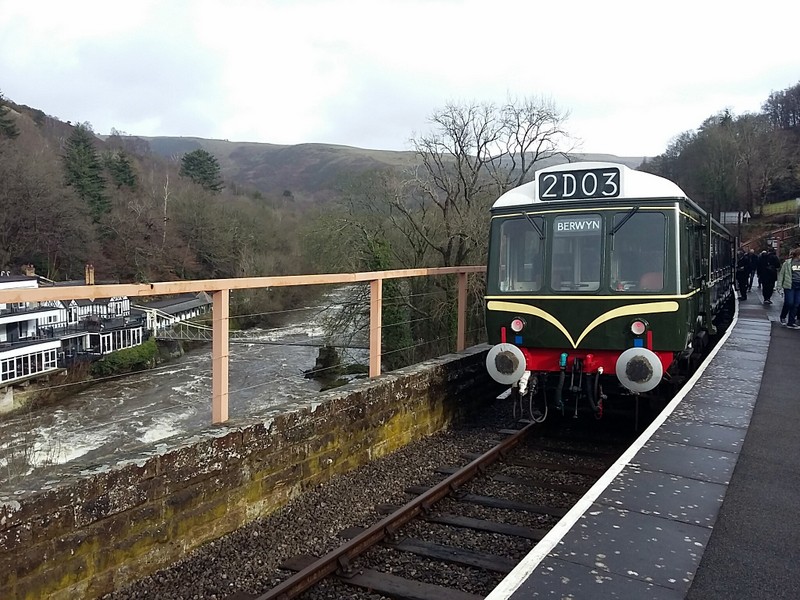
Following the installation of the reupholstered seats, repairs to some wall panels, and a thorough clean amongst other things, a finishing touch was added with the installation of some reproduction 'Mind your head' signs. Some of them proved to be more of a challenge than others and needed a wooden backing plate...
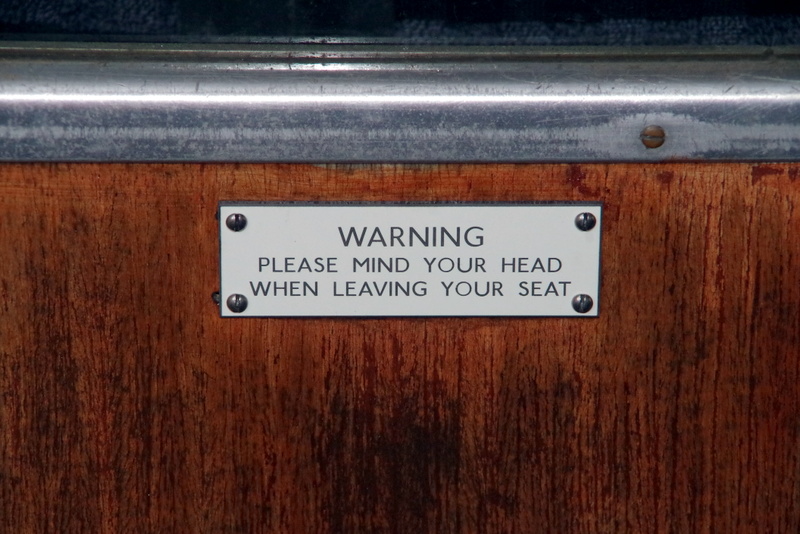

The gangway connection on the trailer car (54504) was completed with the installation of the treadplate (but not without testing a countersink drill bit to destruction and worrying its hastily-purchased replacement!), the metal strips for securing the top flap, and the sacrificial top flap that provides extra protection against the weather, exhaust particles etc.
As stated above, last weekend marked the start of the 'M' exam that will concentrate our minds, and dirty our overalls, for the next few weeks.
Having been assigned the job "Engine oil and filter element renew", one intrepid member of the team eagerly crawled underneath the power car and immediately got stuck in - with some peaceful, solitary contemplation as to the best way to tackle it...
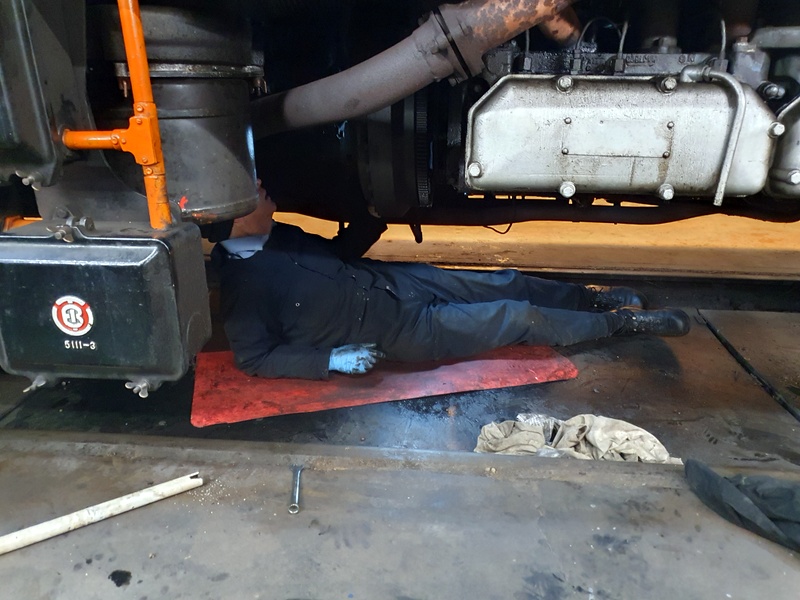
Unfortunately, that phase of the job was rudely interrupted by one of the engineers in charge reminding said person that the 'M' in 'M' exam stands for 'Major', not 'Meditation'. Having then been persuaded to operate on a significantly 'higher voltage' (aka non-geological timescale), our hero set about draining the engine oil, removing the centrifugal oil filters, air filters and air pre-filters from both engines prior to transferring some of their content to his overalls with the aid of a steam cleaner...

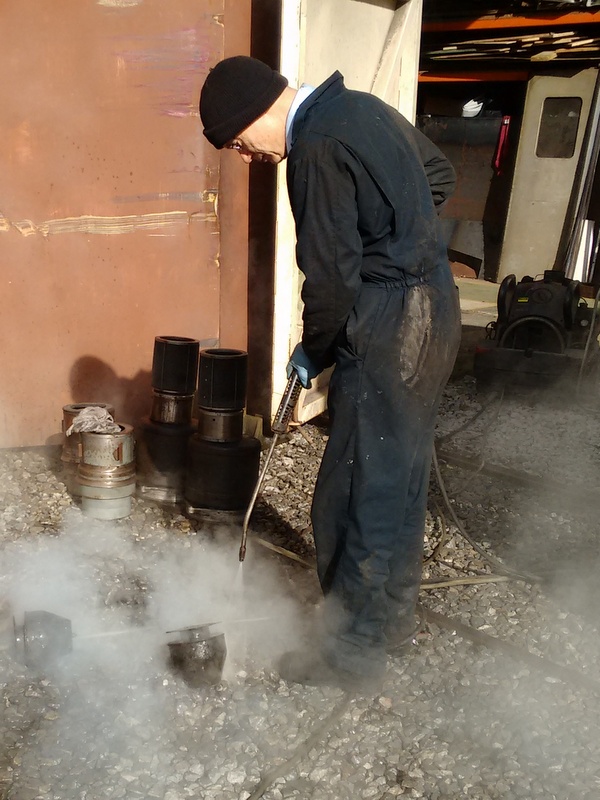
The above picture shows the air pre-filters being cleaned with a steam cleaner. In the background are the components of the main air filters that had already been processed.
Whenever we carry out exams, and especially the bigger ones such as this, we expect there to be some surprises and, on this occasion, the first of those occurred during the cleaning of the jumpers and sockets. With a two-person team the job went well for a while...
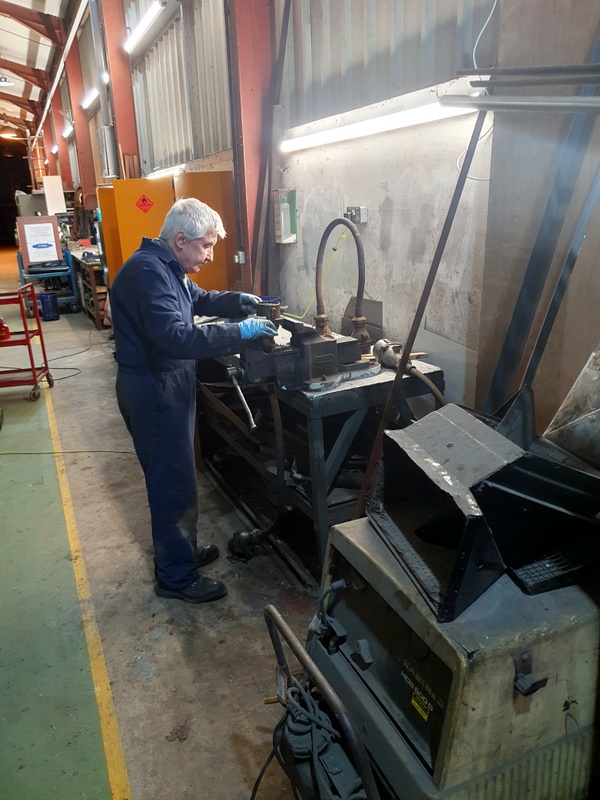
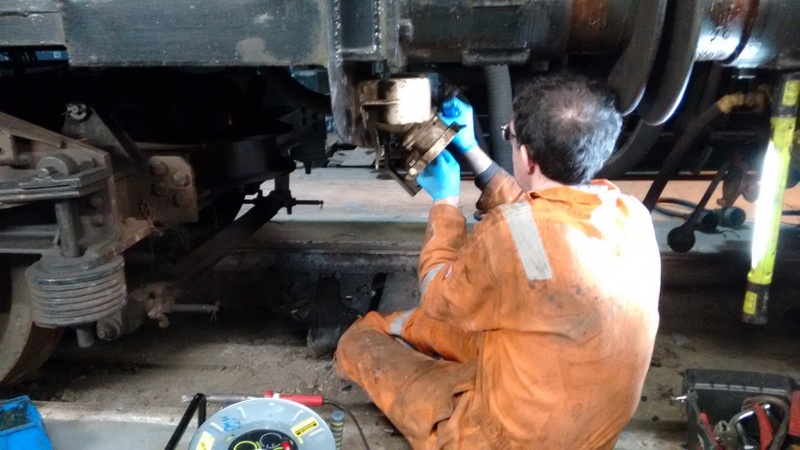
... but then the removal of the normally-captive end of one jumper at the rear of 56171 brought four broken pins out of the socket too...
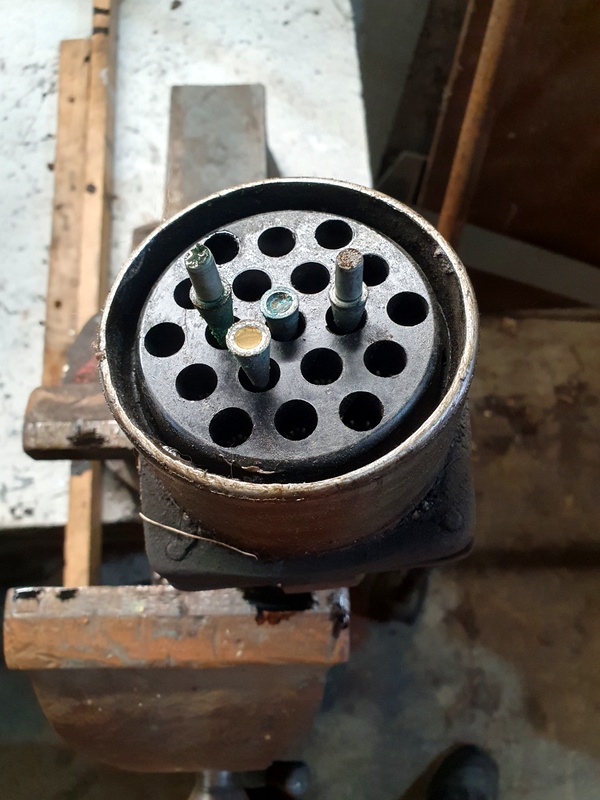
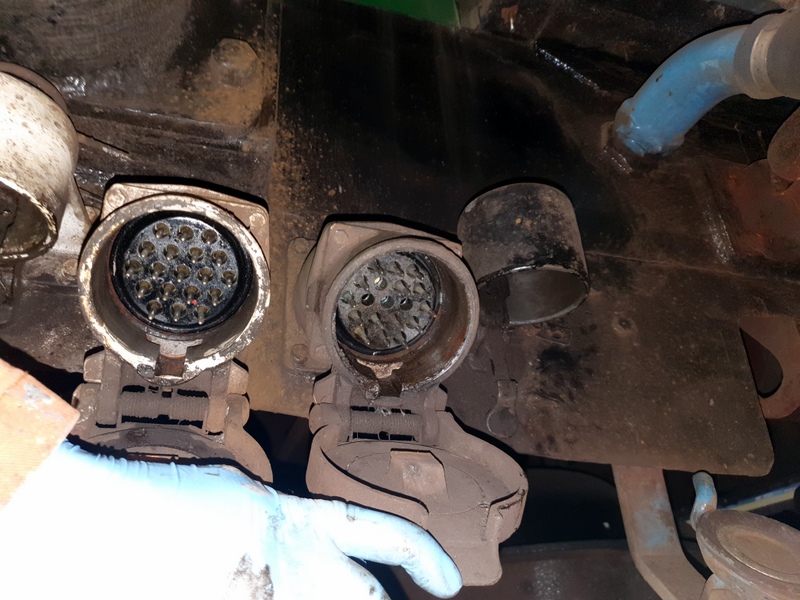
That turned into an interesting exercise, firstly because the contact block could not be removed in one piece and had to be extracted as a kit of parts, and secondly because the lack of spare cable meant delving into the rear junction box to liberate some slack.
The original designer(s) of the railcar electrical system had the presence of mind to duplicate all of the circuits of that jumper socket in one of the other ones so the loss of any of the electrical connections would go unnoticed unless there happened to be a double-fault condition involving the corresponding circuit in the other jumper connection.
A paper towel holder that was procured many months ago was reassembled and fitted to 56171...

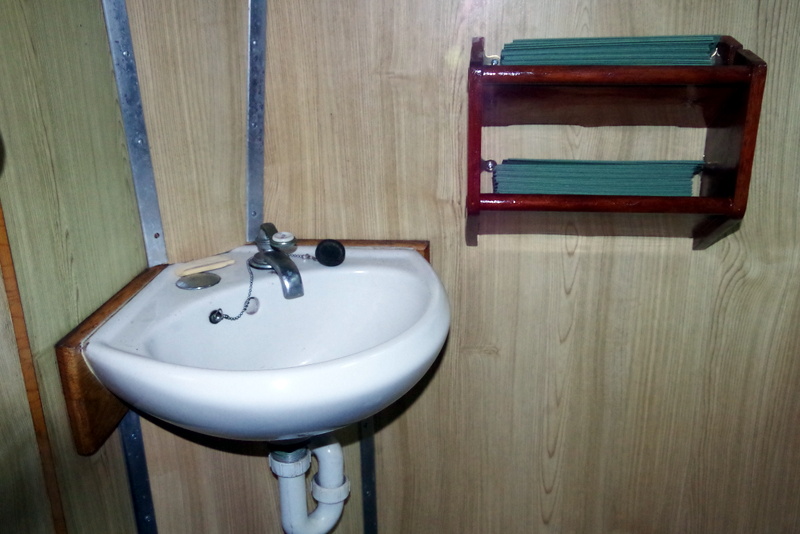
We are not sure whether or not the Wickham originally had a paper towel holder but we think that it is an ex 'Mark 1' type so is, at least, from the correct period.
As mentioned above there is a separate, continuing, project to make improvements to the brakegear with the next item on its agenda being the removal of the brakegear from the no. 1 (leading) bogie on the trailer car (56171)...
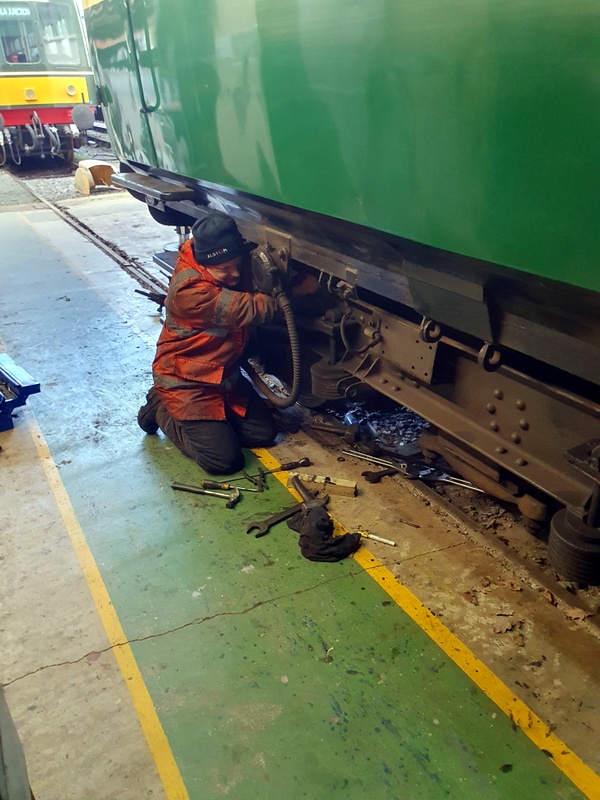
It wasn't long before that job required the wielding of a sledgehammer (something that my camera phone struggled to capture)...

...and the brakegear was soon reduced to a kit of parts that were placed in an orderly queue for the steam cleaner...
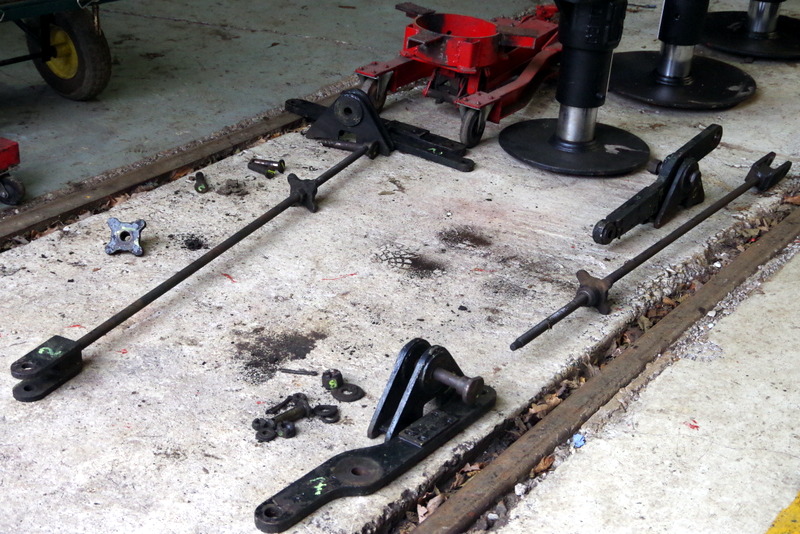
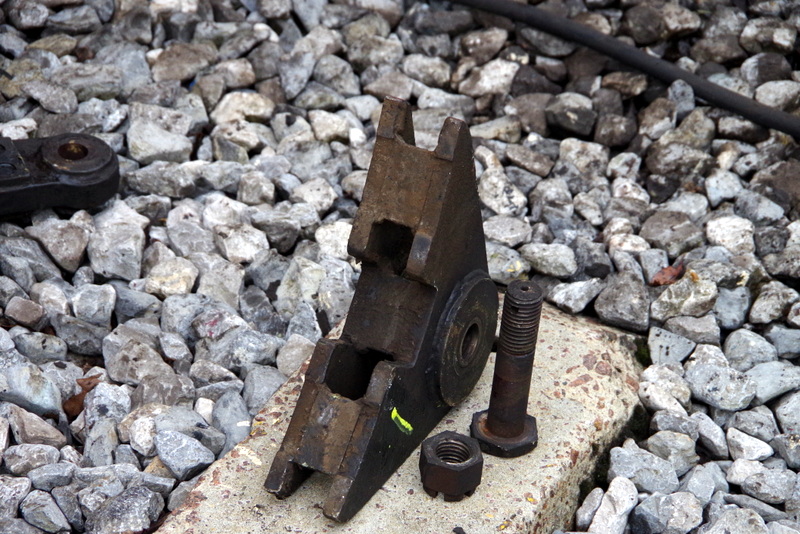
Gloucester class 100 51118/56097 (undergoing restoration at the Midland Railway, Butterley)
The heating ducting was fitted with new fixing brackets which were then secured to the wall and floor on the secondman's side of the first class compartment.
The 3” x 2” timbers that fit into a recess by the cab windscreens were cut, drilled, and then the metal corner stanchion with the recess in was drilled and tapped. The timber was squared up to the window glass before fitting.
Thanks to John Joyce, Mike Martin, Graham Parkin and Martin Plumb for supplying the pictures.
The winter closed season provides an opportunity for us to carry out maintenance, repair and restoration work without the added distraction of running trains but the available time disappears very quickly and we once again find ourselves preparing for the start of our next running season towards the end of March.
With that in mind, the members of the group who attended the working meeting on 3/4 February focussed their attention on a Fuel Point (FP) exam for the class 127 and further work to put the class 108 back together. Further information about the work that took place can be found in the 'Unit-specific work' section below.
In other news, our electrical team has been busy installing some additional lights in the shed at Pentrefelin. The more even light distribution will make it easier to do jobs (especially painting) that were difficult to carry out in the pools of light (and shade) that existed before.
We also took delivery of three overhauled buffers, one of which will replace a faulty one on the class 127 power car (51618), leaving the other two to be filed under 'B' in our store.
Following the recent installation of the reupholstered seat backs and bases it was discovered that some additional backing pieces would need to be manufactured for some of the first class seats. In general, the first class seats are positioned back-to-back and so the backs of them are hidden but there are two double seats whose backs are visible through the glass of the vestibule partition as shown in the following picture...
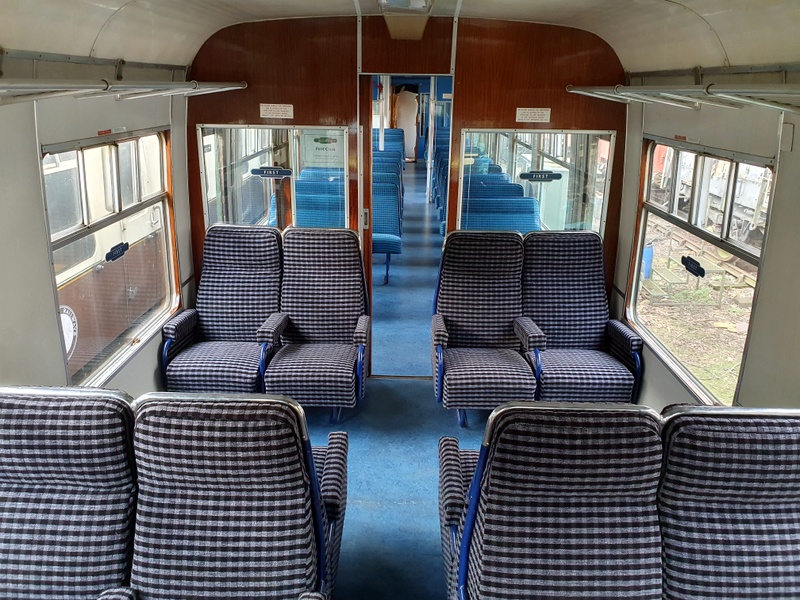
The additional backs for those were created using plywood and the charcoal moquette...

...and then fitted to good effect...

A job to fix a faulty tail/marker light repeater in the cab of 51933 became more involved than expected but then had a surprise bonus because the destination indicator light started to work - allegedly for the first time since it was installed shortly after the unit arrived from Swanage roughly five years ago! The following picture shows it being demonstrated to good effect although the displayed destination was rather ambitious...
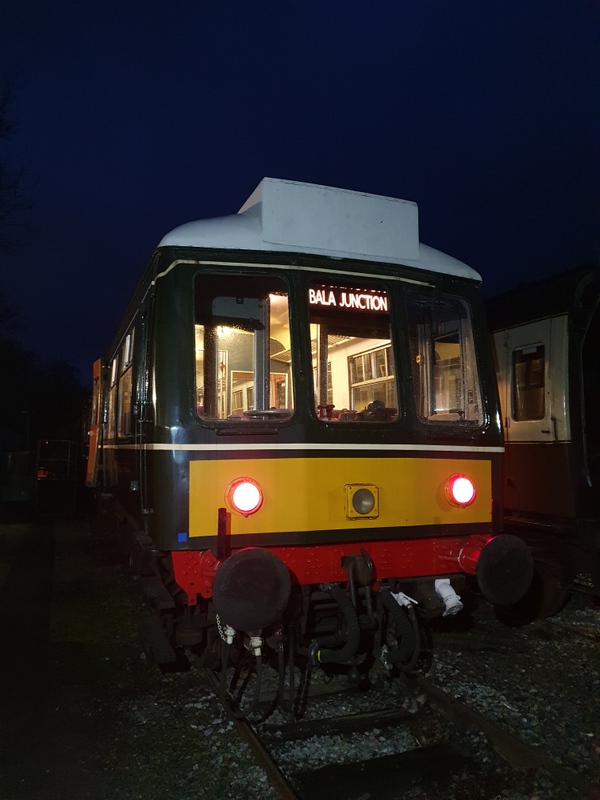
The class 127 power car was given a Fuel Point (FP) exam to make it available for traffic if/when required. Its destination indicator was also fixed, with a new switch and two new lamp fittings, but I do not know what, if any, fanciful destinations were displayed on that one because photographic evidence was conspicuous by its absence!
Thanks to John Joyce for supplying the pictures.